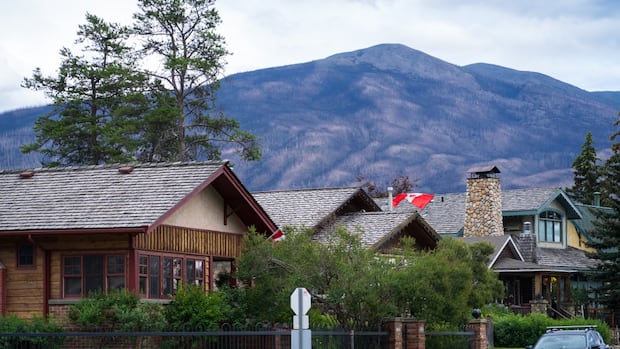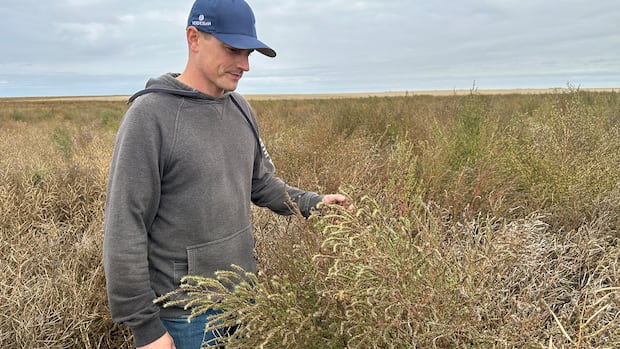The Municipality of Jasper and Parks Canada are taking firmer measures to protect the park from wildfires, after a massive wildfire destroyed 30 per cent of the townsite in July 2024.
The measures will ensure that homes are built with non-combustible roofs and siding instead of highly flammable material like cedar shingles, which had been a popular choice for the mountain town.
The municipality adopted new urban design standards under its land use and planning department based on guidelines under the national FireSmart program.
The program, developed in the early 2000s, outlines how people can make their properties more resilient to fire, such as removing debris and dry vegetation and building with non-flammable materials.
Mathew Conte, Jasper’s fire chief, said cedar shingles, pine needles and pine cones are prime fuel for ember showers that dropped hot embers and bits of fire over Jasper last summer.
“Where we found we were severely impacted by that, were a lot of the homes that still had cedar shake roofs,” Conte said during a news availability on Monday.
“Crews spent most of their evening actioning those fires all night long,” Conte recounted. “Unfortunately, by the time they put out one and moved on to the next one, that ember shower just reignited the structure in behind us.”
Conte said the fire also latched on to wooden decks and juniper bushes at properties that didn’t implement FireSmart guidelines.
The municipality and Parks Canada are encouraging people who still have cedar roofs to replace them with non-combustible materials, like tin and asphalt.
Conte said the fire department has hired a captain of prevention to help educate residents about FireSmart guidelines, a program that’s been around since the early 2000s.
With the help of the new captain, the fire department has done 30 advanced home assessments in the past two months, he noted.
“I think they’re taking it a lot more seriously,” Conte said. “We have a lot of residents that have actually reached out to us.”
Jasper has also purchased residential sprinkler kits, which people can buy at cost from the fire department.
Zone of protection
Parks Canada has expanded its risk reduction program that started more than two decades ago, said David Argument, the resource conservation manager for Jasper National Park.
Crews cut down highly flammable evergreens like the lodgepole pine in sections of forest around the townsite to make it harder for fire to spread through high tree canopy, he said.
So far, they’ve carved out 900 hectares of land to the north and west of the townsite.
Thinning the forest makes it harder for fire to spread through a high canopy of trees, he said.
On Pyramid Bench, a hill north of the townsite, Argument showed media a new 60-hectare block of land they cleared over the winter,
“We’re trying to produce a zone of fire protection or, or vegetation treatment all the way around the perimeter of the community.”
You can walk from the furthest southern end of town at Stone Mountain for about 2.5 km before you get to the end of the zone, Argument said.
“We’re knitting together a long-term plan that we believe will be able to maintain the long term,” Argument said. “We can’t just cut it and walk away. It has to be something we can maintain long term.”
It costs $15,000 a hectare to cut down and remove the wood.
“So it is costly work to get this wood off the landscape,” Argument said.
Conte said last summer’s hot and dry conditions were unprecedented, and they were taken by surprise how quickly the fire hit the town — 46 hours from the time the fire ignited in the south valley.
“From the time that fire was about five kilometres out, it took about 30 minutes to reach the town. So very little time.”
“We’ve always planned and prepared for a forest fire. And I think any community that lives in a forested area, it’s always a matter of when it’ll happen, not if,” Conte said.







